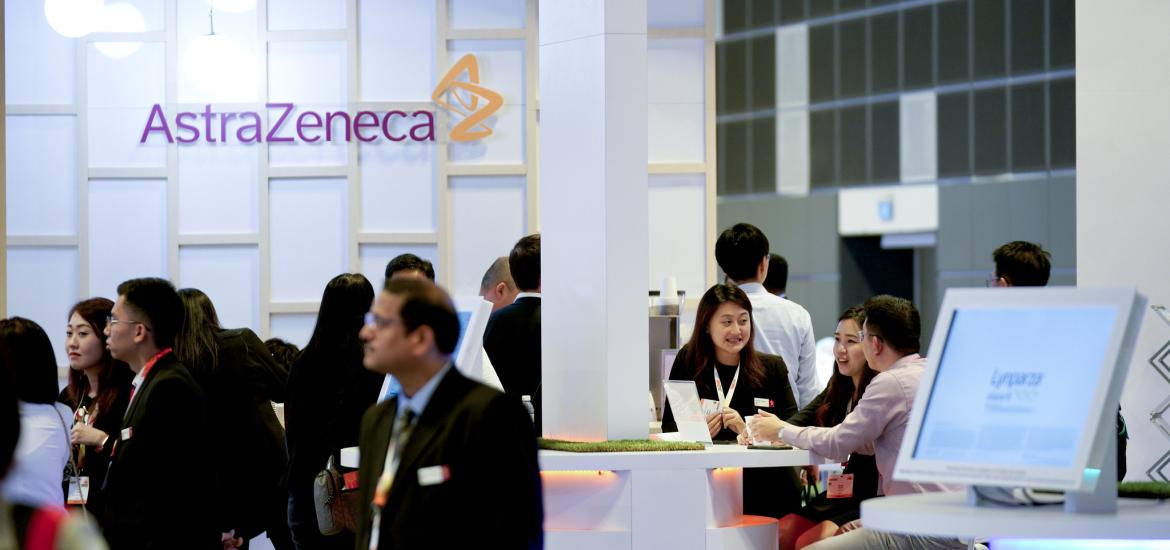
ESMO 2023 – some Tropion fears allayed
However, lack of meaningful efficacy in Tropion-Lung01 suggests that datopotamab deruxtecan might be restricted to a histology-defined NSCLC subgroup.
However, lack of meaningful efficacy in Tropion-Lung01 suggests that datopotamab deruxtecan might be restricted to a histology-defined NSCLC subgroup.

The first numerical results from AstraZeneca/Daiichi Sankyo’s Tropion-Lung01 study suggest that there was some basis for the worries triggered when the companies toplined a positive hit back in July. But fears over drug-related deaths might have been misplaced, an ESMO late-breaking abstract suggests.
The trial was the first big test of the companies’ anti-TROP2 ADC datopotamab deruxtecan, in NSCLC patients who had failed first-line targeted agents and in some cases chemo as well. Apart from the lack of reassurance on the result's clinical meaningfulness, revelation of “some grade 5 events” had wiped billions from the companies’ market caps at the time.
The extent of the grade 5 events, however, amounts to three investigator-assessed datopotamab-related deaths (a 1% rate), versus two deaths on docetaxel control, according to the abstract revealed yesterday. Interstitial lung disease, a known toxicity of the companies’ Enhertu, was seen at grade 3 or higher in just 3.4% of datopotamab patients.
This should assuage some of the biggest fears over the project. However, the ESMO late-breaker shows precisely why Astra had omitted the words “clinically meaningful” from its July press release.
The actual PFS benefit was statistically significant, with the 25% reduction in risk of progression or death versus docetaxel yielding a 0.004 p value, which cleared a 0.008 boundary. But the medians painted a far worse picture: just 4.4 months for dato, amounting to less than a month's benefit over docetaxel.
The big question doctors will want answered at ESMO on Monday is therefore whether dato has any path forward in second-line NSCLC. One hope might be patients with non-squamous histology, a subgroup whose analysis had been prespecified in Tropion-Lung01. Here the mPFS benefit amounted to nearly two months, with a 5.6-month number that Jefferies analysts said was “likely” clinically meaningful.
Breast cancer
It was perhaps because of the extremely adverse market reaction to the Tropion-Lung01 press release that Astra took a different tack with dato’s breast cancer study Tropion-Breast01 last month. Here the PFS benefit was described as clinically meaningful, with a trend on OS, and “low” rates of all-grade ILD.
Tropion-Breast01 features in a separate ESMO late-breaker, which reveals the absolute numbers for the first time. Here, 6.9 months of mPFS looks competitive with Gilead’s approved anti-TROP2 ADC Trodelvy, albeit the latter is in a slightly later-line setting. The abstract sheds no further light on ILD, but Jefferies wrote that “we understand no grade 4 or 5 ILD events were reported” in Tropion-Breast01.
Also in the mix is sacituzumab tirumotecan, an anti-TROP2 ADC Merck & Co had licensed from Kelun that had impressed in early NSCLC data at ASCO this year. A breast cancer study features in a regular ESMO abstract that had been unveiled earlier, and will no doubt prompt extensive cross-trial comparisons.
Cross-trial comparison of anti-TROP2 ADCs in ER-positive HER2-negative breast cancer
| Trodelvy | Datopotamab deruxtecan | Sacituzumab tirumotecan | |
|---|---|---|---|
| Company | Gilead (ex Immunomedics) | AstraZeneca/ Daiichi Sankyo | Merck & Co/ Kelun |
| Trial | Tropics-02 | Tropion-Breast01 | NCT04152499 |
| Setting | 3rd to 5th line | 2nd or 3rd line | 3rd line or later |
| mPFS vs chemo | 5.5mth vs 4.0mth | 6.9mth vs 4.9mth | 11.1mth (no control arm) |
| HR=0.661 (p=0.0003) | HR=0.63 (p<0.0001) | NA | |
| mOS vs chemo | 14.4mth vs 11.2mth | Not disclosed | Not disclosed |
| HR=0.789 (p=0.0200) | HR=0.84 (not significant at interim) | Not disclosed | |
| Safety | Boxed warning of neutropenia & diarrhoea | 21% grade ≥3 TRAEs | 49% grade ≥3 TRAEs, no ILD |
Source: US prescribing information & ESMO.
3007













